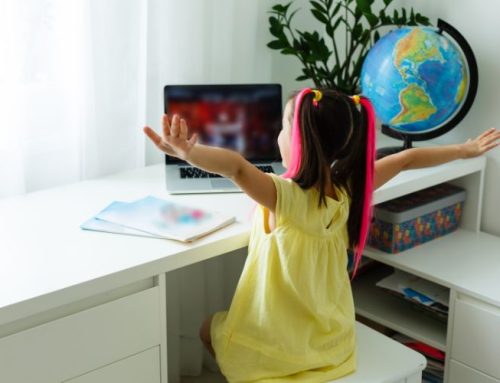Being able to connect to and interact with peers is an important part of the school experience. At SelfDesign Learning Community, we build that connection and interaction right into our core learning program.
“There is a lot of research out there that shows the importance of peer interaction in education and in young people’s growth and social development,” says SelfDesign Vice Principal Vanessa Kuran. Interaction between peers in an online learning environment like SelfDesign works differently than in brick-and-mortar schools, she says. “Because we don’t all share in the same physical space, we’ve designed our programs to allow and encourage learners to interact and to get to know one another through our online learning spaces. Learners are invited to engage with each other, share their thoughts and perspectives with each other, work together online in groups, and to learn together.”
Here are a few of the opportunities we’ve built into our program for learners in grades 8 to 12 to meet and get to know one another.
Grade 8/9 Workshops
We offer four drop-in Grade 8/9 Workshops each year, with each six-week series centred around a theme or an aspect of personal development. Consisting of curated resources and activities that learners can engage with on their own time, in any way that suits their personal learning style, interest and needs, the workshops help to inspire and deepen learning and allow learners to explore the themes together in a playful, low-pressure and collaborative way.
Participation is optional. Learners can attend in the workshops as observers or actively engage in the weekly real-time meetings to explore the topics with other learners, sharing stories and perspectives. They can attend just one meeting or as many as they like. They can take part in one workshop, or attend them all.
Grade 8/9 Circle
Grade 8/9 Circle also encourages group interaction. Circle consists of a committed group of learners who gather weekly for real-time, online meetings to expand their study skills, practise group presentations, and connect with peers. Topics include community, jobs, active citizenship, personal identity, conflict resolution, and much more.
“Circle is meant for kids who are looking for an ongoing connection with a smaller group,” SelfDesign Vice Principal Catherine Dinim says.
“They can sign up and have a circle of peers to interact with – it’s like a hangout, and it’s a tighter group, so people can really create deep relationships with peers.”
Grade 10–12 Themes
These interdisciplinary approaches to learning allow grade 10–12 learners to take courses, develop skills and competencies, and meet BC Ministry of Education graduation requirements through the lens of their own interests – for example, through the themes of “animals,” “photography,” “arts and crafts,” “outdoor adventure,” and so on. Each learner chooses two themes each year and undertakes group-based learning and weekly learning challenges with their peers.
“Learners are encouraged to interact with peers who have chosen the same theme,” Catherine says. “They can join their peers in weekly real-time meetings in the theme areas, learning consultant-hosted group video chats, discussion forums and other online interactions.”
Learners can participate at whatever level they feel comfortable. “We have learners who don’t speak and usually keep their cameras off,” she says. “We have kids who chat in the textbox but don’t usually speak. We once had a group of learners who never turned their cameras on but worked together on activities like writing a story together using a shared document. And that’s okay.”
“It’s a great opportunity to find like-minded people – which could be hard to do otherwise,” SelfDesign graduate Erik says. “SelfDesign provides the perfect opportunities for these connections to be made.”
Grade 10–12 Open Spaces
To support peer discussion and interaction, Open Spaces provides a real-time, online meeting space for grade 10 to 12 learners to gather informally at the start of each week. They can use the space to jam together on a project or idea in a collaborative way, meet in break-out rooms to explore a particular challenge or topic, or even stay quiet and work on their own while listening in and staying connected to their peers.
The benefit of the interactive learning spaces that SelfDesign provides as part of its core online programming, says recent SelfDesign graduate Amelia, is that learners can shape the interaction. “You get to choose how that experience is going to look like,” she says. “Sure you have to work harder to meet people, but when you do meet those people, it’s in a much more positive way.”







